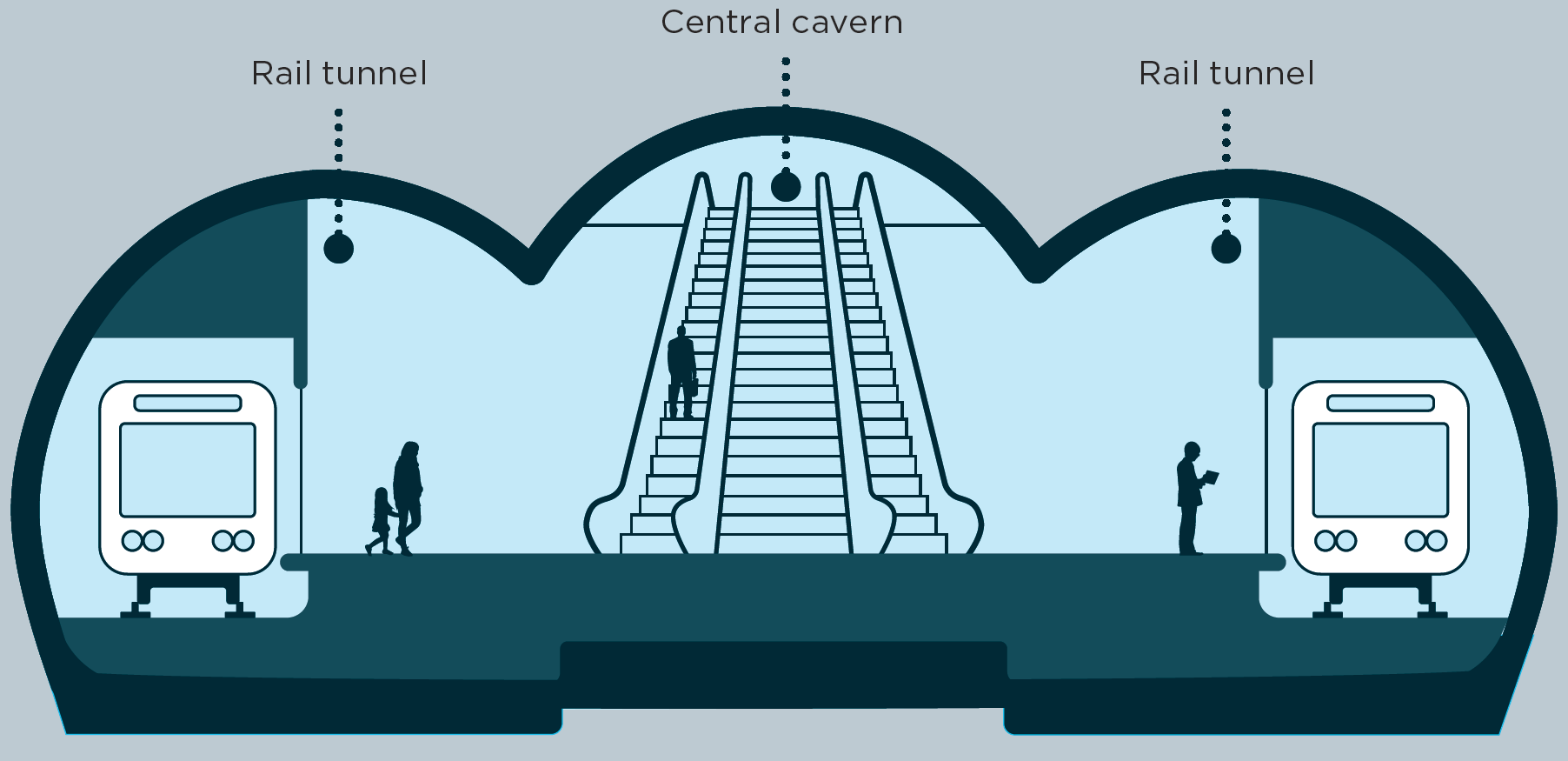Construction of the Metro Tunnel is nearly complete. The twin rail tunnels are built and completely fitted out and now being used by test trains. The 5 new underground stations are full excavated with work continuing on the platforms, concourses and facilities. The Metro Tunnel is due to open in 2025.
Station construction techniques
To avoid disruptions to Swanston Street, access shafts up to 11 storeys deep were dug and used to transport machinery, equipment and workers underground to excavate the new stations.
Both State Library and Town Hall stations are 'trinocular' caverns. Roadheaders created 3 overlapping tunnels to create a wide open space for both concourse and platforms. The total platform width at the CBD stations is around 19m – some of the widest underground metro platforms in the world.
 Trinocular cavern, indicative only.
Trinocular cavern, indicative only.
The other new stations, Arden, Parkville and Anzac, were built with a cut and cover method, excavating straight down from the surface and covering the station with a concrete deck.
Acoustic sheds
Temporary acoustic sheds up to 20m high were used during Metro Tunnel construction to minimise noise, light and dust impacts on the local community. Custom built sheds were installed at City Square, Federation Square, Franklin Street, A'Beckett Street, and St Kilda Road.
Tunnelling works
Along its route, the depth of the Metro Tunnel is up to 40m. The deepest point is under Swanston Street, at the northern edge of the CBD, where the new tunnels pass under the existing City Loop tunnels.
As we built the tunnels we:
- navigated existing underground infrastructure – including the City Loop, CityLink tunnels and services such as water, gas and electricity
- excavated through a range of challenging geological conditions including rock, sands, clays and silt
- tunnelled under 2 significant waterways, the Yarra River and Moonee Ponds Creek
- managed the removal and disposal of around 1.8 million cubic metres of soil and rock
- managed disruption to residents, businesses and public events
- minimised potential impacts on road traffic, pedestrians, cyclists and existing public transport and freight services.
Additionally 26 cross passages were built, smaller tunnels connecting the rail tunnels at intervals of approximately 230m. These cross passages are an important safety feature that allow passengers and emergency services to move between the tunnels in the event of an emergency.